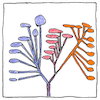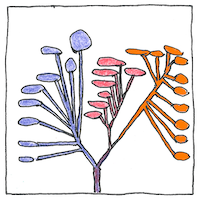Carl Woese,
George E. Fox
cell biology

|
Three-domain system
Archaea were thought to be bacteria both being prokaryotes, that is, unicellular organisms lacking nuclei enclosed in a membrane; however, Carl Woese and George E. Fox found that archaea were different and not derived from bacteria, but having a common ancestor.
Archaea
They’re hard to see with naked eyes, and hard to distinguish from bacteria even with a microscope. They live in soils, marshes, and oceans; they live in hot springs and salt lakes; they live on our skin and in our mouths. Once we thought they were rare, but now we know they’re everywhere.
More like you and me
Maybe eukaryotic cell DNA (in you and me) is derived from ancient archaeal ancestors, as similarities in genes may show. Or maybe horizontal gene transfers moved archaeal DNA into eukaryotes more recently, just as they moved between archaea and bacteria. But the thought that tiny halophiles, thermophiles, alkaliphiles, or acidophiles; whether phototrophs, lithotrophs, or organotrophs, could share their gifts with us could either humble us or make us proud.



Before we discovered archaea, we thought we had only prokaryotes (bacteria) and eukaryotes (protists, plants, fungi, and animals). At first, we thought archaea were kinds of bacteria; however, Woese found large differences among archaea, bacteria, and eukarya in ribosomal RNA structures, which are essential to all life and known to be stable on evolutionary time scales.
See also in The book of science:
Readings in wikipedia: